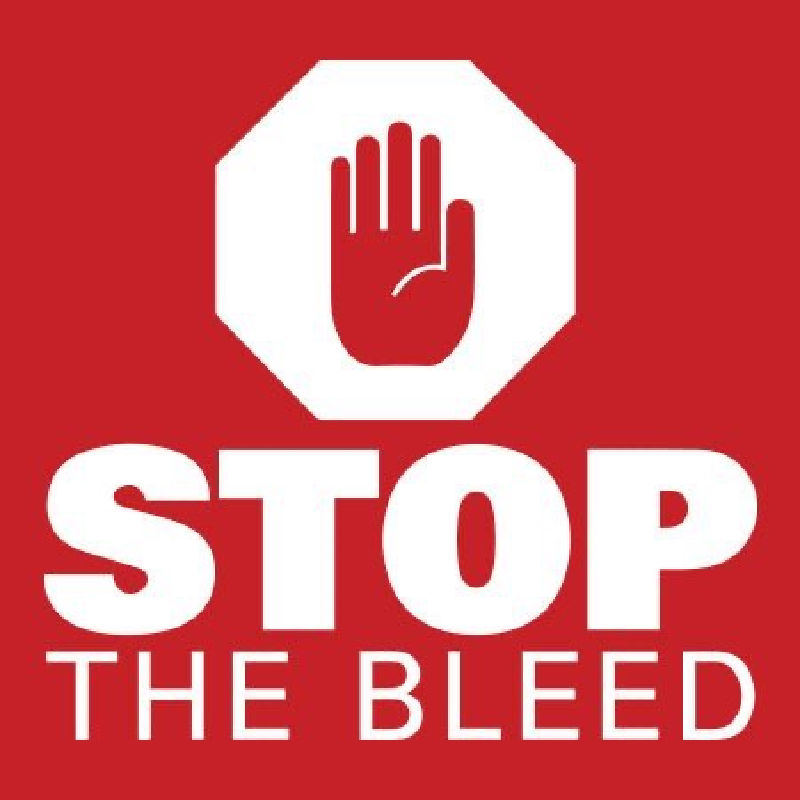
Stop The Bleeding
Stopping bleeding quickly and effectively can save a life.
Techniques for hemorrhage control, approved by medical professionals and first responders, can be divided into these primary categories: direct pressure, wound packing, tourniquet application, and advanced medical techniques.
Direct Pressure

When? - The first line of defense against bleeding.
Steps:
- Identify the source: Locate the bleeding site.
-
Apply firm pressure:
- Use a clean cloth, gauze, or your hand if necessary.
- Push directly onto the wound, ensuring you cover the source of the bleeding completely.
- Hold steady: Do not release pressure to check the wound unless absolutely necessary.
Considerations:
- Use protective gloves if available to prevent infection.
- Elevate the wounded area above the heart (if no fracture is suspected) to slow blood flow.
Wound Packing

When? - Used for deep, penetrating wounds (e.g., gunshots, stabs).
Steps:
- Expose the wound: Remove clothing or barriers to see the injury.
- Use hemostatic gauze if available: Specialized gauze (like QuikClot or Celox) promotes clotting. If unavailable, use clean, sterile material.
-
Pack the wound tightly:
- Push gauze or cloth directly into the wound cavity with your fingers.
- Continue until the wound is filled, and bleeding slows or stops.
- Apply direct pressure: Once packed, press firmly over the wound.
When to use:
- On junctional areas like the groin, armpit, or neck where a tourniquet can’t be applied.
Tourniquet Application

When? - For severe bleeding on limbs when direct pressure and wound packing are insufficient.
Steps:
- Choose the right tourniquet: Use a commercial-grade tourniquet (e.g., CAT, SOFT-T), or make one with a strong, non-elastic material.
-
Place it high and tight:
- Apply above the wound, as close to the torso as possible, avoiding joints.
- "High and tight" minimizes the risk of missing secondary bleeding sources.
-
Tighten until bleeding stops:
- Twist the windlass (the tightening mechanism) until blood flow ceases.
- Secure the windlass to prevent loosening.
- Note the time of application: This is crucial for medical responders to assess tissue viability.
Warnings:
- Do not remove the tourniquet after application.
- Improper placement can worsen bleeding or cause additional injury.
Hemostatic Agents

What they are: Substances that accelerate clot formation.
- Products: QuikClot, Celox, or similar.
- When to use: Combined with wound packing to enhance clotting, particularly in high-flow bleeding.
Advanced Medical Techniques (For Professionals)

- Pressure bandages: Elastic bandages like the Israeli bandage provide sustained pressure.
- Surgical interventions: Emergency surgery or cauterization for internal bleeding.
- IV fluids and blood transfusions: To restore lost blood volume and maintain pressure.
Key Points for All Techniques
- ABC Priority: Ensure airway and breathing are stable before focusing on bleeding if multiple injuries are present.
- Call for Help: While administering aid, ensure emergency services are contacted.
- Monitor for Shock: Signs include pale, clammy skin, rapid breathing, and confusion. Treat shock by keeping the victim warm and lying flat.
When NOT to Stop Bleeding
- Head injury bleeding (nose or ears): Indicates possible skull fracture or brain injury; do not apply pressure.
Training Resources
- Certification programs (e.g., "Stop the Bleed" campaign) provide hands-on experience and should be pursued for anyone interested in preparedness.
By mastering these methods, you can effectively manage bleeding and increase survival chances during emergencies.

